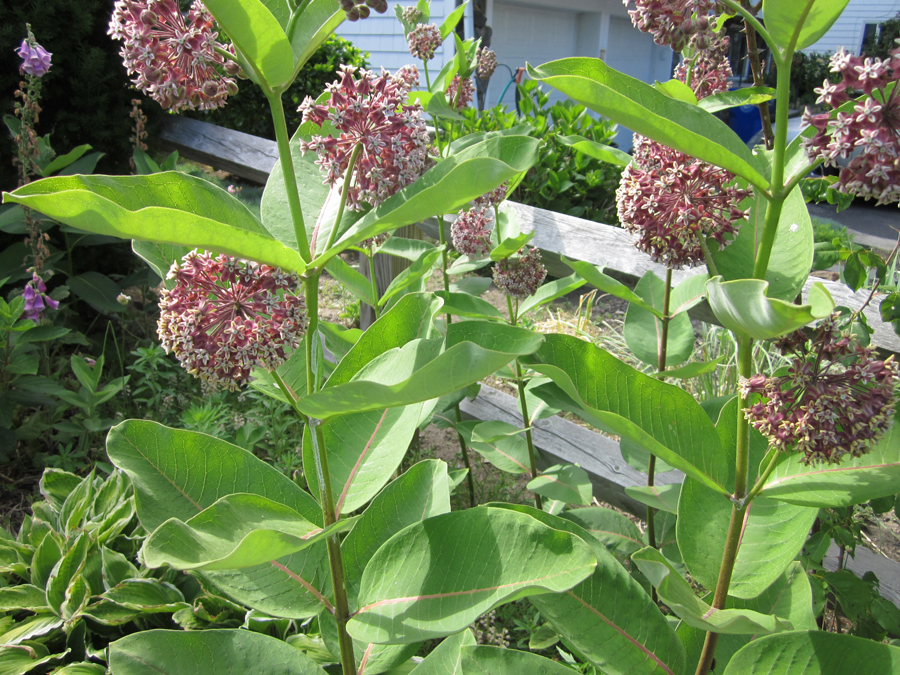
Common milkweed not only provides nectar for bees and other pollinators, but it is the larval host plant for Monarch butterflies.
According to landscaping expert David Beaulieu, “Asclepias is the only plant family that serves as the host plant for monarch butterfly egg laying. The monarch larvae, the hatchling caterpillars, feed exclusively on milkweed leaves. Without milkweed, there can be no monarch butterflies.”
We love the Monarchs and therefore, love the fragrant clusters of pink-purple flowers that appear in late spring to mid-summer in our garden. Some of our friends won’t grow milkweed because of the milk-like latex substance within its stems and leaves, which is poisonous except to the Monarchs.
“Common milkweed grows quickly to two to four feet in height. It has a narrow vertical growth habit and thick, long, oblong green leaves that grow to about eight inches.”
Because the milkweed plants have a tendency to spread aggressively, we keep our “Monarch Butterfly Garden area” small by trimming/cutting any emerging underground stems/runners between the nearby plants and shrubs, such as the hostas, baptisia, roses, lavenders and azaleas.
Also, we try to remove all the seed pods before they ripen. If let alone, the attractive pods can grow two-to-four inches long, ultimately “opening” and casting their fine seeds to the wind. Some gardeners compare them to the seeds of dandelions in this regard.
As noted, “One thing you should know about every milkweed plant is that it is poisonous to animals if consumed, so you would not want to plant milkweed around livestock or a pet that likes to chew plants. The toxicity of the plant is what helps protect the Monarchs from predators, as they do not like the taste of the caterpillars or butterflies.”
It’s time to get out there and check to see how the larvae are doing. They’ll soon be Monarchs!

